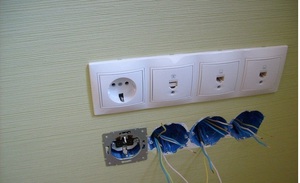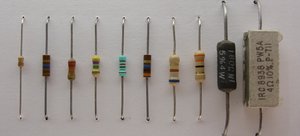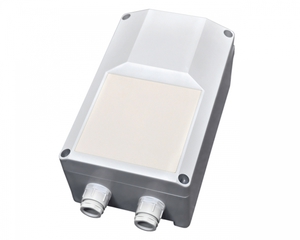Connecting the engine from the washing machine: application options, wiring diagram
Every user knows, that the electric motor is the artificial heart of any home appliance, and it is he who turns the drum of the washing machine. Every homemaker is interested in questions: whether it is possible to connect the engine from the washing machine to another device yourself?
Application options
This is not so difficult to do, even for a person completely unfamiliar with the basics of electrical engineering. Let's say, you have a broken Indesit car, but an engine with power 430 W, develops speed to 11500 rpm, quite serviceable, its motor resource is not exhausted. So., it can be used for household purposes.
There are many different ideas, how to use and reconnect the engine from a failed washing machine.
- The simplest option is to make a grinder, as in the house it is constantly necessary to sharpen knives, scissors. For this purpose it is necessary to rigidly fix the electric motor on a strong basis, attach a grindstone or grinding wheel to the shaft and connect it to the mains.
- Tim, who is engaged in construction, you can make a concrete mixer. For these purposes, you will need a tank from the washing machine after a little refinement. Some make a homemade vibrator for shrinking concrete - this is a good option for using a motor.
- You can make a vibrating table, if you are engaged in the production of cinder blocks or paving slabs on your own plot.
- Grain grinder and grinder - a very original application of the engine from an old washing machine, indispensable for those, who lives in the countryside and is engaged in poultry breeding.
There are many options for use, they are all based on the ability of the motor from the washing machine to rotate various nozzles or actuate auxiliary mechanisms. Ви можете вибрати самий незвичайний варіант використання знятого обладнання, but to carry out the intended, you need to know, how to connect the engine from the washing machine correctly, so that the winding does not burn.
Washing machine motor
Connection tips
When using a powerful washing machine motor in a new guise, you need to keep in mind two important aspects of joining:
- such units are not started through the condenser;
- no starting winding required.
Before connecting, we advise you to deal with wires of different colors, present on the transfer case:
- two white wires are from the tachogenerator, we don't need them;
- brown and red - go to the winding to the stator and rotor;
- gray and green are connected to graphite brushes.
Be prepared for that, which differ in color in different models of wire, but the principle, how to connect them, remains unchanged. To detect pairs, ring the wires in turn: go to the tachogenerator have resistance 60-70 Ohm. Take them aside and fasten together with insulating tape, so as not to interfere. Other wires to ring, to find them a couple.
We understand the connection scheme
Before further action it is necessary to get acquainted with the wiring diagram - it is very detailed and understandable to any amateur craftsman.
It is not so difficult to connect the washing machine motor, as it seems at first glance. First of all, we need wires, coming from the rotor and stator: according to the diagram, the stator winding must be connected to the rotor brush. To do this, make a jumper (it is marked in pink), and insulate it with insulating tape. There are two wires left: from the rotor winding and the wire from the second brush, connect them to the home mains voltage.
Warning! If you connect the motor to 220 V, he immediately begins to rotate. That there were no injuries, it is necessary to fix it rigidly on any surface beforehand: this way you guarantee the safety of testing.
You can simply change the direction of rotation by flipping the jumper over to other contacts. To turn it on and off, you need to connect the appropriate buttons to the circuit, this can be done using the simplest wiring diagrams, which can be easily found on special sites.
We briefly told, how to connect the engine from an old washing machine, to use it for household needs, but now we need to improve the new device a bit.
Speed regulator
The engine from the washing machine is quite high speed, therefore it is necessary to make a regulator, so that it works at different speeds and does not overheat. For this purpose the usual light intensity relay will be suitable, but needs a little refinement.
- Remove the triac with a radiator from the old machine, so-called semiconductor device - in electronic control, it performs the function of a controlled switch.
- Now you need to solder it to the relay chip instead of a low-power part. This procedure, if you do not have such skills, it is better to trust a professional, acquaintance electronics or computer scientist.
In some cases, the motor normally copes with new work without a speed controller.
Motor speed adjustment
Types of washing machine motors
Asynchronous - removable together with the capacitor, which are of different types, depending on the model of the washing machine. Connect it to the battery, the case of which is tight, made of various metal or plastic, it is desirable not to violate.
Carefully! Such a motor can be removed from the car only when the capacitor is fully discharged - the electric shock can be very significant.
Low-voltage collector motors differ in that, that permanent magnets are placed on their stator, alternately connected to direct current. There is a sticker on the body, where the voltage is specified, which is not recommended to exceed.
Electronic engines must be dismantled together with the electronic control unit, on the case of which there is a sticker indicating the maximum possible connection voltage. Observe the polarity, because these motors have no reverse.
Possible faults
Now you know, how to connect an electric motor, to give him new life, but a small incident may occur: the engine did not start. We need to understand the reasons and find a way to solve the problem.
Check the engine warm-up after running for one minute. In such a short period of time, the heat does not have time to spread to all parts and you can accurately record the place of intense heating: stator, bearing assembly or something else.
The main reasons for rapid heating are:
- bearing wear or clogging;
- greatly increased capacitor capacity (only for asynchronous motor type).
Then check each 5 minutes of work - enough three times. If the fault is in the bearing - disassemble, lubricate or replace. During further operation, constantly monitor the engine heat. Do not overheat, repairs can cause great damage to the home budget.



